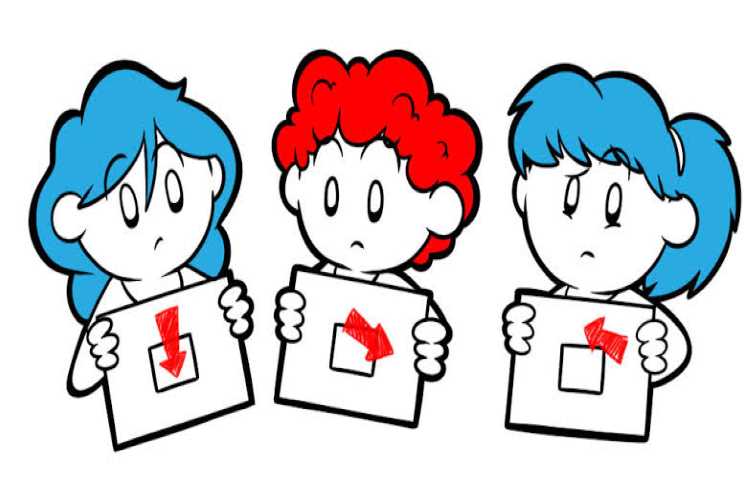You must have heard that prepositions are crucial building blocks of English expressions. Without prepositions, you really can’t do much. However, prepositions are also rather tricky to work with. There are certain cases when you need to use only a particular preposition and anything apart from that will be wrong. Let us look into the details.
Preposition Rules
Did you know there are hundreds of prepositions in the English language? A fun way to remember prepositions is that they are words that tell you everywhere a bunny can run; for example, a bunny can run:
up
down
near
far
by
at
around
close
always
With some of these popular prepositions in mind, let’s look at a few important rules for prepositions.
Pair Prepositions Properly
Determining which preposition to use can be a tricky proposition. It’s especially difficult when dealing with idioms – expressions in the English language that don’t necessarily make sense when taken literally. Here are some examples of idioms, along with the correct prepositions:
# George would love to attend the party.
# You’re capable of anything you set your mind to.
# The teacher is concerned by Janette’s consistent tardiness.
Also Read : Daily Use of English Sentences in Conversations: Spoken English Sentences for Everyday
Watch What Follows Prepositions
Prepositions must always be followed by a noun or pronoun. That noun is called the object of the preposition. Note that a verb can’t be the object of a preposition. Let’s look at two examples:
#a. The bone was for the dog.
This is correct. The preposition for is followed by the noun “dog.”
#b. The bone was for walking.
This is not correct. The preposition for is followed by the verb “walked.” A verb can never be the object of a preposition.
Avoid Using Prepositions at the End of Sentences
Because prepositions must be followed by a noun and have an object, they should rarely be placed at the end of a sentence. For example, it’s generally not correct to say:
#a. The table is where I put my books on.
However, there are certain circumstances where it is acceptable to end a sentence with a preposition. These exceptions exist where the preposition isn’t extraneous. In other words, the proposition needs to be there, and if it wasn’t, the meaning of the sentence would change.
In the above example, the use of the preposition “on” isn’t necessary. We could remove “on” and the meaning would be the same. Therefore, the proposition was extraneous or unnecessary. That said, here’s an example where it’s perfectly acceptable to use a preposition at the end of a sentence:
#b. I turned the TV on.
If you removed “on” from the end of this sentence, it would change the meaning. Instead of switching on the set, you would be saying that you turned the TV itself. Alternatively, this could be written as:
“I turned on the TV.”
Don’t Confuse “In” and “Into”
When you want to express motion toward something, use “into” rather than “in.” Reserve “in” for moments when you want to indicate a location. Here are some examples:
#a. I swam in the lake. (Indicating location)
#b. I walked into the pub. (Expressing motion)
#c. Look in the cupboard. (Indicating location)
#c. She drove into the city. (Expressing motion)
Try Not to Interchange “Than” and “From”
We’ll close with more of a suggestion than a hard and fast rule. It deals with the word “different.” Try to avoid this:
You look different than your mother.
Instead, opt for:
You look different from your mother.
Also Read : What Are Homophones and Homographs And Why You Should Know Them
7 Common Mistakes with Prepositions and How to Correct Them
Mistakes with prepositions are the most common type of grammatical mistake. Even if you are quite fluent in English, it is still likely that you may get your prepositions wrong at times. Here’s a shortlist of 7 common mistakes that people usually do with prepositions:
#1. Incorrect: I cannot agree with you in this situation.
Correct: I cannot agree with you in this situation.
#2. Incorrect: He agreed with my demands.
Correct: He agreed to my demands.
#3. Incorrect: She is waiting for the postman to arrive.
Correct: She is waiting for the arrival of the postman.
#4. Incorrect: Please wait inside the white line.
Correct: Please wait behind the white line.
#5. Incorrect: I have been waiting for three hours.
Correct: I have been waiting for three hours.
#6. Incorrect: He reached the airport at 3 pm.
Correct: He reached the airport at 3 pm.
#7. Incorrect: The flight will depart at 8:00 am.
Correct: The flight will depart at 8:00 am.
What Issues Might Prepositions Create for English Learners and Teachers?
It’s extremely difficult to use prepositions effectively in English, and they cause a slew of issues for teachers and students alike.
To begin with, most prepositions, particularly the most common ones, serve multiple purposes. Depending on whose dictionary you read, the preposition ‘at’ has as many as 18 diverse uses. Prepositions can be difficult to understand as vocabulary items in and of themselves, and it’s not uncommon for English learners to ask instructors to explain what a term like ‘at’ means.
Secondly, there is no rational way to determine which preposition is appropriate for a given noun, verb, or adjective. Consider the following scenarios: the reason why, arriving at, being furious with someone, and being on a train.
Place and Movement Tips
Stick to the Tried-and-true Essentials
It’s not a terrible idea to follow the pattern set by most course texts, which is to handle prepositions in manageable pieces. Prepositions of time, place, and motion, for example, might be taught at different times to allow students to gradually build up their understanding of prepositions. This will be far more effective than, say, attempting to educate every possible use of the word ‘in’ at the same time.
Also Read : The Formula of Present Perfect Continuous Tense: Facts and Rules to Know
Engage Students in Physical Activity
You can issue commands for kids to move around in the activity Simon Says, such as “Simon Says hop on your chair” or “Simon Says get beneath your desk,” which is wonderful for reinforcing prepositions of location and movement with younger students. Students respond strongly to movement and quickly begin utilising prepositions.
A competing timed review game can be quite effective with adult learners. Divide the class into groups, recite a sentence, and then have them sketch it on the whiteboard in turn.
If you state, “The dog is behind the couch,” the students must draw a comparable image, which can be scored based on speed or accuracy, whichever is more pleasant for the class.
Make Use of Visual Stimuli
Piktochart is an excellent resource for producing infographics that provide learners with strong imagery to help them visualise the preposition. Bitstrips is a fantastic tool for making cartoon graphics that are both broadly popular and simple to understand.
You can begin by creating infographics and cartoons for your students, but having them create infographics themselves is a more effective method to get them engaged with the language.
All Preposition Words from A to Z
Because the correct preposition cannot always be predicted, the expression must be mastered in its whole. The difficulty is exacerbated when a single vocabulary item again, it’s the most widely used ones that are frequently guilty flirts with a variety of prepositions, lengthening the teaching and learning process beyond what we might expect.
A to Z
A: aboard, about, above, according to, across, after, against, ahead of, along, amid, amidst, among, around, as, as far as, as of, aside from, at, athwart, atop
B: barring, because of, before, behind, below, beneath, beside, besides, between, beyond, but (when it means except), by, by means of
C: circa, concerning
D: despite, down, due to, during
E: except, except for, excluding
F: far from, following, for, from
I: in, in accordance with, in addition to, in case of, in front of, in lieu of, in place of, in spite of, including, inside, instead of, into
L: like
M: minus
N: near, next to, notwithstanding
O: of, off, on, on account of, on behalf of, on top of, onto, opposite, out, out of, outside, over
P: past, plus, prior to
R: regarding, regardless of
S: save, since
T: than, through, throughout, till, to, toward, towards
U: under, underneath, unlike, until, up, upon
V: versus, via
W: with, with regard to, within, without
Conclusion
Prepositions provide clues and link the remainder of a sentence together. They have a very important role to play and it is necessary to remember how they can be used, which prepositions can be used when, and where they belong in the sentence. Looking for a portal to learn fluency in English? The Fluent Life is the one for you.
Also Read: Telephone Conversation in English: Formal Phone Conversation Examples for Better Understanding






